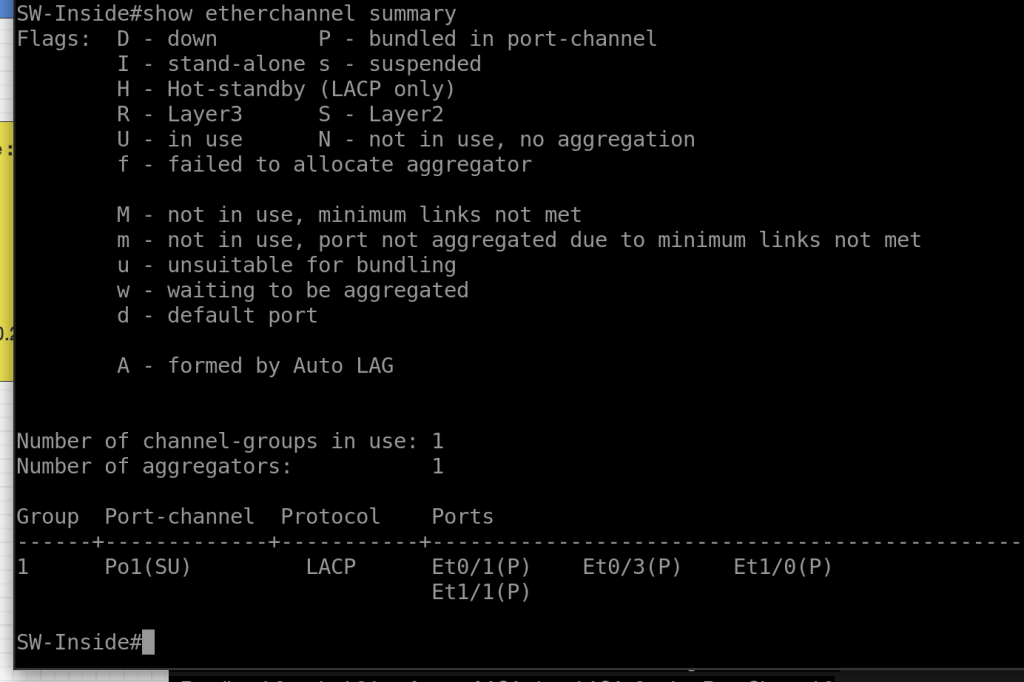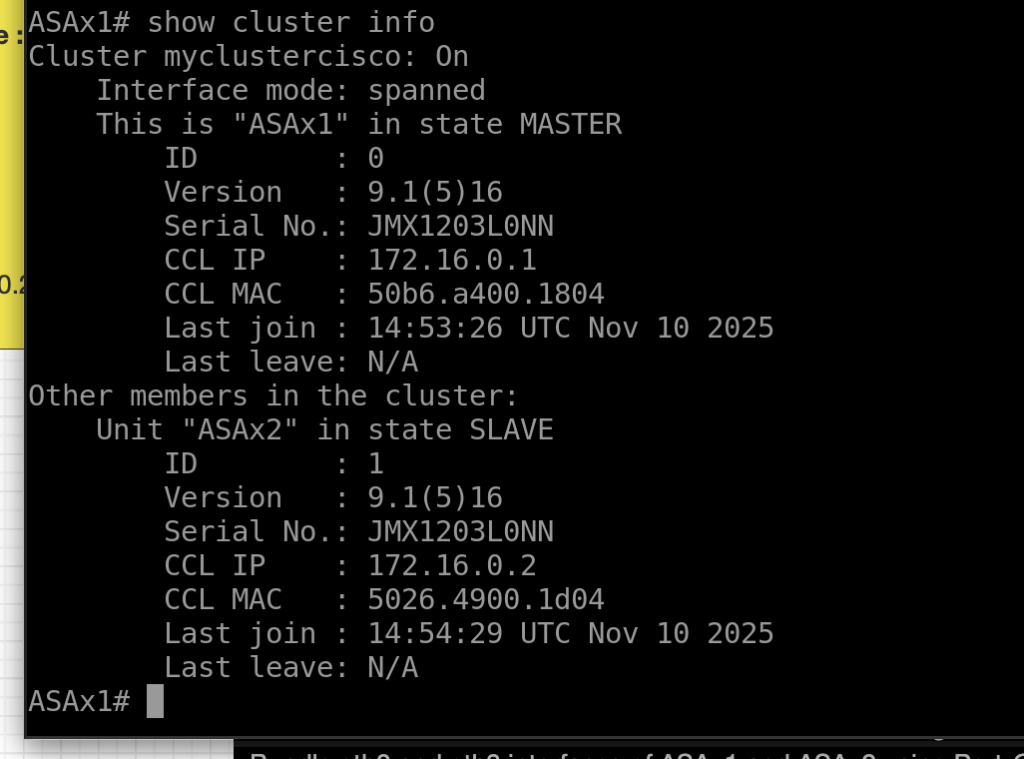Overview
- Clustering lets you group multiple ASA together as a single devices.
- Cluster provides all the convenience of single devices (management. integration into a network) while achieving the increased throughput and rendundancy of multiple devices.
- When we combile multiple devices we can measure increasing throughput and performance.
- 70% combine throughput.
- 60% combine connections
- 50% connection per second
- One of member become master and the others is slave.
- Master elections:
- based on priorty 1-100, lowest is preferred.
- if priority is default the first devices start is become a master.
Requirement Cluster
- Isolated, high speed back-plane for intra cluster communications known as (cluster control link)
- Management access to each ASA for configuration and monitoring.
Clustering mode
- Individual Mode
- each devices have unique ip address
- Spanned Mode
- only master have ip address
Spanned mode is more recommended for productions.
Clustering Role
- Owner: the owner session of the client and forward to destinations.
- Director: get replicate session from owner, if owner down director will copy the session the new owner session.
- Forwarder: forward the session to the owner and not forwarding to the client.
Topology On cluster
- Usually 1 dedicated switch connected to each ASA as a bridge for cluster control link high speed.
- each member ASA will form port aggregation to switches.
Topology

Description Topology
- Cluster control link is on eth4 for each cisco ASA
- Cisco ASAx1 and ASAx2 port eth0, eth3 will become etherchannel 2.
- Cisco ASAx1 and ASAx2 port eth1, eth2 will become etherchannel 1.
- cluster name “mycluster cisco”
Testing Scenarios
• Configure Spanned mode clustering with ASAx1 being Master and ASAx2 being Slave.
• Cluster control link IP address would be 192.168.20.100 and 192.168.20.101 for ASAx1 and ASAx2 respectively.
• Bundle eth1 and eth2 interfaces of ASAx1 and ASAx2 using Port-Channel 1.
• Bundle eth0 and eth3 interfaces of ASAx1 and ASAx2 using Port-Channel 2
Configurations
Switch Inside Zone
- configure etherchannel for each interface facing cisco ASA
vlan 20
interface Ethernet0/1
switchport access vlan 20
switchport mode access
channel-group 1 mode active
!
interface Ethernet0/3
switchport access vlan 20
switchport mode access
channel-group 1 mode active
!
interface Ethernet1/1
switchport access vlan 20
switchport mode access
channel-group 1 mode active
!
interface Ethernet0/1
switchport access vlan 20
switchport mode access
channel-group 1 mode active
!
interface Port-channel1
switchport access vlan 20
switchport mode access
!Switch Outside Zone
interface Ethernet0/1
switchport mode access
channel-group 2 mode active
!
interface Ethernet0/2
switchport mode access
channel-group 2 mode active
!
interface Ethernet0/3
switchport mode access
channel-group 2 mode active
!
interface Ethernet1/0
switchport mode access
channel-group 2 mode active
!
interface Port-channel2
switchport mode access
!Cisco ASA Master
- configure each ASA same mode in this scenario is single context
conf t
mode single
# verify
show mode
# after that the devices will reboot2. no shutdown all of interface on cisco asa
int eth0
no sh
int eth1
no sh
int eth2
no sh
int eth3
no sh
int eth4
no sh3. configure ether channel for each interface
interface Ethernet0
channel-group 2 mode active
!
interface Ethernet1
channel-group 1 mode active
!
interface Ethernet2
channel-group 1 mode active
!
interface Ethernet3
channel-group 2 mode active
!
4. Cluster configuration
# define mode clustering interface
conf t
cluster interface-mode spanned
cluster group myclustercisco
local-unit ASAx1
cluster-interface Ethernet4 ip 172.16.0.1 255.255.255.0
priority 1 # set priority to low to become master
console-replicate
enable5. set ip address for each etherchannel inside and outsidezone
interface Port-channel1
port-channel span-cluster
nameif INSIDE
security-level 100
ip address 192.168.10.1 255.255.255.0
interface Port-channel2
port-channel span-cluster
nameif OUTSIDE
security-level 0
ip address 200.0.0.1 255.255.255.0 Cisco ASA Slave
- set mode same as master
conf t
mode single2. configure clustering
conf t
cluster interface-mode spanned
cluster group myclustercisco
local-unit ASAx2
cluster-interface Ethernet4 ip 172.16.0.2 255.255.255.0
priority 2
console-replicate
enableVerification
- check on each switch or ASA the etherchannel interface is up.
show etherchannel summary
2. check etherchannel on ASA
show port-channel 2
3. check cluster status
show cluster info
4. you can also check the hostname for Slave is same with master, but the hostname cluster is different
show cluster info
Conclusions
- with clustering we can use multiple ASA to get better performance and high availability.
- clustering will make our management ASA is easy to monitor and configure.
- the port channel for slave not needed to configure, it will replicate from master ASA
If you found this useful, subscribe to newsletter
